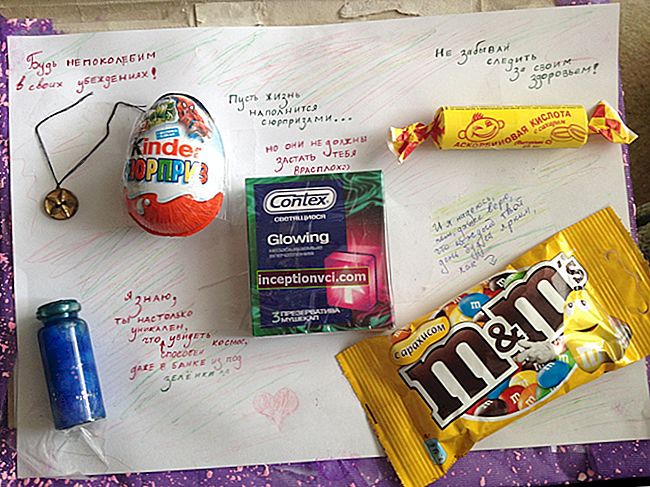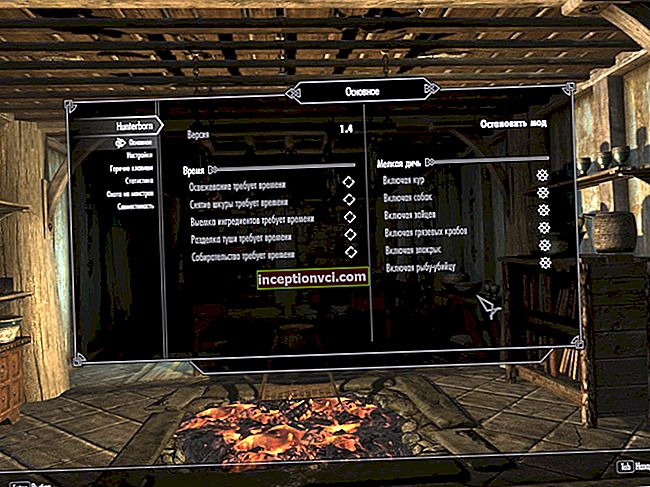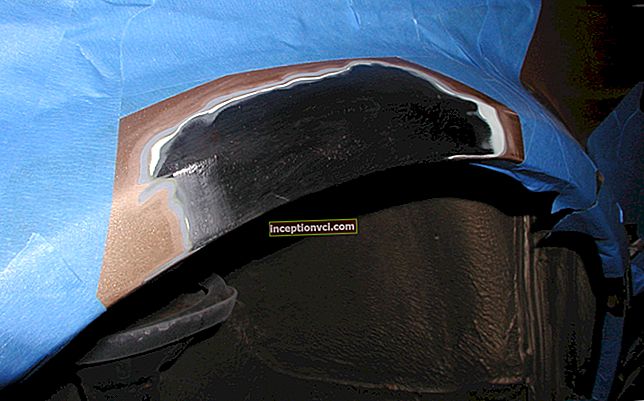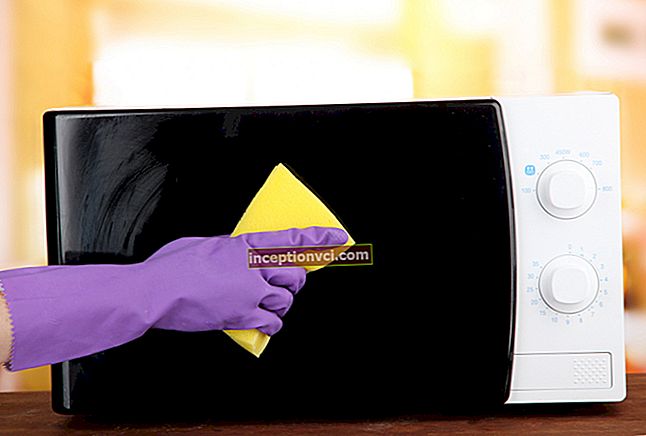Zalman CNPS20LQ Water Cooling System Review
Contents of the review:
1. Introduction;
1. Appearance of the package;
1. Description of the appearance and design features of the cooling system;
1. Description of the process of installing the cooling system on the motherboard;
1. Description of the test bench;
1. Testing and comments on the results obtained;
1. Conclusion (generalized impression, list of advantages and disadvantages of the cooling system).
Zalman is a South Korean firm that manufactures high-performance cooling systems for computers. One of the leaders in the industry. Emphasizes quietness and high performance in its products. Has many patents in this area. In addition, the Zalman brand sells computer cases, power supplies and audio devices.
In the era of "computer enthusiasts", Zalman coolers were cult status. They were especially in demand among the "aemedeshniks", as well as those who overclocked the central processor. It was believed that their famous coolers on the bar (the fan blows not from above, but from the side) are more efficient, since they exclude the formation of "dead zones".
Many different models of water cooling systems have passed through my hands, but, unfortunately, none of them has become a possible replacement for tower supercoolers. Nevertheless, the number of NWOs continues to grow. Even Intel and AMD decided to put their hand in this, making it clear that air cooling systems are not the only option for enthusiasts and overclockers.
The Zalman company has been producing air cooling systems for a very long time, and now the time has come to show the world a worthy model of CBO for the mass consumer. By the way, as far as I know, at the moment, Zalman has stopped all experiments with water cooling systems, so the mass release of the Zalman CNPS20LQ CBO can be considered a real return to the market.
Unfortunately, this cooling system is still quite difficult to find in the Russian and Ukrainian markets.
Appearance and contents of the package

* (photo of the box in which the Zalman CNPS20LQ water cooling system is supplied) *
The Zalman CNPS20LQ water cooling system is sold in a medium-sized carton with a traditional design. The color scheme is dominated by dark colors. In terms of its dimensions, the box is comparable to the box size of a standard supercooler. Its length is 233 millimeters, width is 140 millimeters, height is 188 millimeters. There is no carrying handle.
The front of the box immediately catches the eye. It features a large photograph of the Zalman CNPS20LQ water cooling system. Below the photo is the name of the model. Also, the attention of the buyer is attracted by the inscription that the installation of the cooling system is possible for 2011 and FM1 socket.
The back of the box contains brief information about the cooling system in eight languages (including Russian).
On the right side edge there are the technical characteristics of the cooler.
To prevent the cooling system from being damaged during transportation, it was placed in a cardboard seal.
* Contents of the box: *
1.Zalman CNPS20LQ water cooling system;
2.120 mm fan;
3. brief installation instructions;
4. a set of mounts.

* (photo of the contents of the box) *
The set of fasteners consists of: reinforcing plates for platforms Intel LGA1155, Intel LGA1156, Intel LGA1366, Intel LGA2011 and AMD AM2, AMD AM2 +, AMD AM3, AMD AM3 +, AMD FM1, two types of clamping frames, retaining ring, fastening screws, bushings with internal thread and plastic attachments.
Accordingly, the Zalman CNPS20LQ cooling system is compatible with the following processor families: Intel Core i7 Extreme, Intel Core i7, Intel Core i5, Intel Core i3, AMD Sempron, AMD Athlon, AMD Athlon FX, AMD Phenom, AMD Athlon X2, AMD Phenom II, AMD Athlon II, AMD Llano, AMD Zambezi
The set includes only one 120 mm fan, which is marked ZP1225ALM. The motherboard uses a four-pin connector to connect to the power supply. Thanks to this, it is possible to change the speed in the range from 900 to 2000 rpm.At the same time, the noise level is no more than 35 decibels at maximum speed.
There is no tube with thermal paste in the kit, the only thing that pleases is that a small amount of thermal paste has already been applied to the copper heat sink.
Appearance and design features of the Zalman CNPS20LQ water cooling system
Zalman CNPS20LQ is a fully assembled and ready-to-use CBO. No special maintenance required. Weight without fan is 600 grams.

* (photo of Zalman CNPS20LQ water cooling system) *
The water cooling system, as usual, consists of a water block with a pump and a copper base, a pair of rubber pipes and a radiator.
The tubes are 330 millimeters long and the pump weighs 195 grams. Small radiator. It is 153 millimeters long, 38 millimeters wide and 120 millimeters high. A maximum of two fans can be attached to it. Although, as it seems to me, one fan will be enough. I just think that the bottleneck will not be the radiator or fan, but a low-power pump. The power consumption of the pump is 3.1 watts. The manufacturer guarantees 50 thousand hours of trouble-free operation (operating temperature ranges from 5 to 35 degrees Celsius). The radiator fins are entirely made of aluminum and are pierced by eight heat pipes.
To improve heat transfer, several tens of very thin copper plates were applied to the back of the base.
The entire system is filled with non-flammable and environmentally friendly refrigerant. Due to the fact that unusual distilled water is used here, the manufacturer excluded the possibility of corrosion of the elements, and also prevented the possible growth of bacterial colonies.
To slightly distinguish its CBO from others, its side faces were painted blue, and the Zalman logo was applied to the pump.
By the way, the Zalman CNPS20LQ water cooling system was manufactured not by Zalman itself, but by Asetek, which has been specializing in the production of closed-type water cooling systems for a long time.
This cooling system is very similar to the Antec Kuhler H2O 620/920 and Corsair Hydro H70.
The only drawback and at the same time an advantage is that the radiator is installed on the rear wall of the case. Due to this arrangement, the amount of air passing through the radiator and the case increases, but at the same time, because of this, a large amount of dust will accumulate on the radiator, respectively, it will have to be cleaned much more often.
Also, you may have noticed that the pump has a transparent plastic cover. Its main purpose is to protect the heat sink from scratches and prevent smearing of thermal paste.
By the way, I didn’t use the bundled thermal paste during testing, it’s just that, for some reason, it didn’t inspire much confidence in me. After removing it from the heat sink, we can see a very well-finished base. This is a huge plus for Zalman, since much less thermal paste is required to be applied to such a base, respectively, and heat transfer between the processor cover and the heat sink will occur with a much higher efficiency.
I will not describe the installation process in detail, since it differs slightly depending on the platform (AMD or Intel) and, moreover, it is very well described in the instructions. Just a couple of tips: "During installation, be careful not to twist the nuts and bolts. It's just that if you put too much stress, something may crack or even break off. However, the pump base should fit very tightly to the processor. Also screw the bolts and nuts evenly on all sides to avoid possible tilting of the waterblock. When applying thermal paste, be careful not to get it on your skin or eyes, as some people may have an allergic reaction. "
I am sure that during the installation you will not have any difficulties.
It is also worth paying attention to the fact that the fan blades should be oriented towards blowing air into the case.Thus, cooling will take place not due to the hot air that accumulates inside the case, but due to the cold ambient air. But be careful, if you are not sure that there is enough airflow inside the case to cool the components contained inside, it is better to direct the fan blades so that hot air escapes from the case, and does not accumulate in it, in order to avoid overheating of the components contained inside. systems.
Test stand and testing methodology for the Zalman CNPS20LQ water cooling system
Test platform # 1:
1. Motherboard: [Asus P8P67-M PRO (Socket LGA1155, Intel P67 chipset, BIOS version 1204, motherboard revision 3.0);] [4]
2. Processor: [Intel Core i5-2500K 3300MHz] [5];
3. System cooling: coolers [Zalman CNPS10X Performa] [6] and Zalman CNPS20LQ;
4. RAM: [Corsair DDR3 2x4096Mb PC3-12800 1600MHz] [7] (works in dual-channel mode);
5. Video card: [MSI Radeon HD6970 2048Mb GDDR5 880Mhz] [8];
6. Hard disk: [Western Digital 1000GB 64MB 7200rpm] [9];
7. Power supply: [Chieftec APS-1000C, power 1000W;] [10]
8. Case: open stand;
9. Software: operating system: Microsoft Windows 7 x64 Ultimate, driver for AMD Catalyst video card version 11.12, utilities for system monitoring and diagnostics: SpeedFan 4.44, Real Temp 3.60, CPU-z 1.58, LinX 0.6.5.
Test platform # 2:
1. Motherboard: [Gigabyte GA-X58A-UD3R (Socket LGA1366, Intel X58 Express / Intel ICH10R chipset);]
2. Processor: [Intel Core i7 920 2667MHz (core voltage 0.8 V, 4 cores, 64 KB L1 cache, 1024 KB L2 cache, 8192 KB L3 cache)];
3. System cooling: cooler Zalman CNPS20LQ, Noctua NH-DH14;
4. RAM: [Corsair DDR3 2x4096Mb PC3-12800 1600MHz] [7] (works in dual-channel mode);
5. Video card: [MSI Radeon HD6970 2048Mb GDDR5 880Mhz] [8];
6. Hard disk: [Western Digital 1000GB 64MB 7200rpm] [9];
7. Power supply: [Chieftec APS-1000C, power 1000W;] [10]
8. Case: open stand;
9. Software: operating system: Microsoft Windows 7 x64 Ultimate, driver for AMD Catalyst video card version 11.12, utilities for system monitoring and diagnostics: SpeedFan 4.44, Real Temp 3.60, CPU-z 1.58, LinX 0.6.5.
As you can already understand after reading the descriptions of the test benches, the rivals of the Zalman CNPS20LQ water cooling system will be such coolers as [Zalman CNPS10X Performa] [6] and Noctua NH-DH14.
The clock speed of the Intel Core i5-2500K processor has been raised to 4500 megahertz, and the voltage to 1.40,000 V.
The clock speed of the Intel Core i7 920 processor was raised to 3800 megahertz, and the voltage to 1.35000 V.
The voltage and frequency of the processor were increased specifically to increase the load on the cooling system. The processor frequency and voltage were increased using the BIOS, no additional utilities were used.
The RAM during the tests worked at a frequency of 1600 megahertz with timings of 7-7-7-20-2T. The video card was not overclocked, so it worked at standard settings.
Idle mode corresponds to the lowest load when no applications are running at all.
To create the maximum load on the processor, the Linpack utility in the LinX shell version 0.6.5 was used (the test ran in four threads, the amount of allocated memory was 2560 MB, fifteen runs were carried out).
I also want to note that during everyday tasks the cooling system does not face such loads, since the LinX test creates 100% load on the processor, especially the voltage on the processor was slightly overestimated.
All graphs show the temperature of the hottest core. The noise level was measured using a Becool BC-8922 digital sound level meter, whose measurement error is no more than 0.5 decibels. Noise measurements were made at a distance of one meter from the test system. The background noise level was 33.8 decibels. The ambient temperature during testing was 25 degrees Celsius and did not change.
Test results
* Intel Core i5-2500K processor (minimum load, the lower the temperature, the better): *
1. Zalman CNPS20LQ water cooling system (fan blades rotate at 1900 rpm) - 30 degrees Celsius;
2. Air cooling system Zalman CNPS10X Performa (fan blades rotate at 1900 rpm) - 30 degrees Celsius;
3.Zalman CNPS20LQ water cooling system (fan blades rotate at 1600 rpm) - 30 degrees Celsius;
4. Air cooling system Zalman CNPS10X Performa (fan blades rotate at 1600 rpm) - 30 degrees Celsius;
5. Water cooling system Zalman CNPS20LQ (fan blades rotate at 1300 rpm) - 31 degrees Celsius;
6. Air cooling system Zalman CNPS10X Performa (fan blades rotate at 1300 rpm) - 30 degrees Celsius;
7. Zalman CNPS20LQ water cooling system (fan blades rotate at 1000 rpm) - 31 degrees Celsius;
8. Air cooling system Zalman CNPS10X Performa (fan blades rotate at 1000 rpm) - 30 degrees Celsius.
* Intel Core i5-2500K processor (maximum load, the lower the temperature, the better): *
1. Zalman CNPS20LQ water cooling system (fan blades rotate at 1900 rpm) - 84 degrees Celsius;
2. Air cooling system Zalman CNPS10X Performa (fan blades rotate at 1900 rpm) - 84 degrees Celsius;
3. Water cooling system Zalman CNPS20LQ (fan blades rotate at 1600 rpm) - 85 degrees Celsius;
4. Air cooling system Zalman CNPS10X Performa (fan blades rotate at 1600 rpm) - 85 degrees Celsius;
5. Water cooling system Zalman CNPS20LQ (fan blades rotate at 1300 rpm) - 87 degrees Celsius;
6. Air cooling system Zalman CNPS10X Performa (fan blades rotate at 1300 rpm) - 86 degrees Celsius;
7. Zalman CNPS20LQ water cooling system (fan blades rotate at 1000 rpm) - 91 degrees Celsius;
8. Air cooling system Zalman CNPS10X Performa (fan blades rotate at 1000 rpm) - 90 degrees Celsius.
* Intel Core i7 920 processor (minimum load, the lower the temperature, the better): *
1. Air cooling system Noctua NH-DH14 (two fans, blade rotation speed 1200 rpm) - 47 degrees Celsius;
1. Zalman CNPS20LQ water cooling system (one fan, blade rotation speed 1800 rpm) - 47 degrees Celsius;
1. Zalman CNPS20LQ water cooling system (one fan, blade rotation speed 1950 rpm) - 47 degrees Celsius;
1. Air cooling system Noctua NH-DH14 (two fans, blade rotation speed 800 rpm) - 48 degrees Celsius;
1. Zalman CNPS20LQ water cooling system (one fan, blade rotation speed 1500 rpm) - 48 degrees Celsius;
1. Zalman CNPS20LQ water cooling system (two Scythe SlipStream fans, blade rotation speed 1200 rpm) - 48 degrees Celsius;
1. Zalman CNPS20LQ water cooling system (one fan, blade rotation speed 1200 rpm) - 49 degrees Celsius;
1. Zalman CNPS20LQ water cooling system (two Scythe SlipStream fans, blade rotation speed 800 rpm) - 50 degrees Celsius;
1. Zalman CNPS20LQ water cooling system (one fan, blade rotation speed 800 rpm) - 51 degrees Celsius.
* Intel Core i7 920 processor (maximum load, the lower the temperature, the better): *
1. Air cooling system Noctua NH-DH14 (two fans, blade rotation speed 1200 rpm) - 78 degrees Celsius;
1. Zalman CNPS20LQ water cooling system (one fan, blade rotation speed 1800 rpm) - 77 degrees Celsius;
1. Zalman CNPS20LQ water cooling system (one fan, blade rotation speed 1950 rpm) - 76 degrees Celsius;
1. Air cooling system Noctua NH-DH14 (two fans, blade speed 800 rpm) - 83 degrees Celsius;
1. Zalman CNPS20LQ water cooling system (one fan, blade rotation speed 1500 rpm) - 80 degrees Celsius;
1. Zalman CNPS20LQ water cooling system (two Scythe SlipStream fans, blade rotation speed 1200 rpm) - 79 degrees Celsius;
1. Zalman CNPS20LQ water cooling system (one fan, blade rotation speed 1200 rpm) - 84 degrees Celsius;
one.Zalman CNPS20LQ water cooling system (two Scythe SlipStream fans, blade rotation speed 800 rpm) - 87 degrees Celsius;
1. Zalman CNPS20LQ water cooling system (one fan, blade rotation speed 800 rpm) - 94 degrees Celsius.
When comparing the Zalman CNPS20LQ and the Zalman CNPS10X Performa, I'm afraid you'll need a photo finish. The temperature difference is only one degree Celsius, which can be easily ignored, as a small change in conditions could lead to such a change in the result.
Taking a closer look at the results, the cooling fan operating at 1900 rpm produces a temperature drop of just one degree compared to 1600 rpm. Thus, as I said, the bottleneck of the system is not the radiator or fan, but a weak pump.
But the fact that the radiator has a small intercostal distance affected the testing. At the minimum fan speed of 800 rpm, the Zalman CNPS20LQ cooler cope with cooling the overclocked Intel Core i7 920 processor, but 94 degrees Celsius is not an ideal operating temperature. After installing two fans with a rotation speed of 800 rpm, the temperature is reduced to 87 degrees Celsius. With increasing fan speeds, the Zalman CNPS20LQ water cooling system catches up with the Noctua NH-D14 supercooler in performance, and at maximum speed shows the best temperature, overtaking the supercooler by 2 degrees.
Thus, the Zalman CNPS20LQ water cooling system easily copes with an overclocked quad-core processor, be it an Intel Core i5-2500K or an Intel Core i7 920.
* Noise level (distance 15 centimeters from the stand, the lower the value, the better): *
1. Cooling system Noctua NH-DH14 (two fans, blade rotation speed 1200 rpm) - 46 decibels;
1. Cooling system Zalman CNPS20LQ (one fan, blade rotation speed 1800 rpm) - 52 decibels;
1. Cooling system Zalman CNPS20LQ (one fan, blade rotation speed 1950 rpm) - 54 decibels degrees Celsius;
1. Cooling system Noctua NH-DH14 (two fans, blade speed 800 rpm) - 37 decibels;
1. Cooling system Zalman CNPS20LQ (one fan, blade speed 1500 rpm) - 48 decibels;
1. Cooling system Zalman CNPS20LQ (two Scythe SlipStream fans, blade rotation speed 1200 rpm) - 46 decibels;
1. Cooling system Zalman CNPS20LQ (one fan, blade rotation speed 1200 rpm) - 43 decibels;
1. Cooling system Zalman CNPS20LQ (two Scythe SlipStream fans, blade rotation speed 800 rpm) - 40 decibels;
1. Cooling system Zalman CNPS20LQ (one fan, blade speed 800 rpm) - 40 decibels.
* Noise level (distance 30 centimeters from the stand, the lower the value, the better): *
1. Cooling system Noctua NH-DH14 (two fans, blade rotation speed 1200 rpm) - 43 decibels;
1. Cooling system Zalman CNPS20LQ (one fan, blade speed 1800 rpm) - 48 decibels;
1. Cooling system Zalman CNPS20LQ (one fan, blade rotation speed 1950 rpm) - 50 decibels degrees Celsius;
1. Cooling system Noctua NH-DH14 (two fans, blade rotation speed 800 rpm) - 35 decibels;
1. Cooling system Zalman CNPS20LQ (one fan, blade speed 1500 rpm) - 44 decibels;
1. Cooling system Zalman CNPS20LQ (two Scythe SlipStream fans, blade rotation speed 1200 rpm) - 42 decibels;
1. Cooling system Zalman CNPS20LQ (one fan, blade rotation speed 1200 rpm) - 40 decibels;
1. Cooling system Zalman CNPS20LQ (two Scythe SlipStream fans, blade rotation speed 800 rpm) - 38 decibels;
1. Cooling system Zalman CNPS20LQ (one fan, blade rotation speed 800 rpm) - 37 decibels.
* Noise level (distance 100 centimeters from the stand, the lower the value, the better): *
1. Cooling system Noctua NH-DH14 (two fans, blade rotation speed 1200 rpm) - 38 decibels;
1. Cooling system Zalman CNPS20LQ (one fan, blade speed 1800 rpm) - 41 decibels;
one.Cooling system Zalman CNPS20LQ (one fan, blade rotation speed 1950 rpm) - 43 decibels degrees Celsius;
1. Cooling system Noctua NH-DH14 (two fans, blade speed 800 rpm) - 34 decibels;
1. Cooling system Zalman CNPS20LQ (one fan, blade speed 1500 rpm) - 38 decibels;
1. Cooling system Zalman CNPS20LQ (two Scythe SlipStream fans, blade rotation speed 1200 rpm) - 37 decibels;
1. Cooling system Zalman CNPS20LQ (one fan, blade rotation speed 1200 rpm) - 36 decibels;
1. Cooling system Zalman CNPS20LQ (two Scythe SlipStream fans, blade rotation speed 800 rpm) - 35 decibels;
1. Cooling system Zalman CNPS20LQ (one fan, blade speed 800 rpm) - 35 decibels.
And now a little about the noise level. The fan, rotating at 1500 rpm, creates a sound pressure level of 38 decibels (distance 1 meter). Everything is as stated in the technical specifications. At the same time, the comfort level is 35 decibels. Therefore, if the system is installed in a case, and not used on an open stand, you will not be annoyed by the noise.
** Conclusion: ** I'll start with the fact that I really liked the Zalman CNPS20LQ water cooling system. It is made of very high quality, the base is perfectly flat. The only thing is that I did not use the supplied thermal paste, but everything is just fine.
Of course, this cooling system did not show sufficient performance that could justify the inflated price of the new product, but on the other hand, the cooler coped with cooling the overclocked quad-core flagship from Intel without any problems. And since historically, cooling systems that use water rather than air to transfer heat are more expensive, we can conclude that the cost of this cooling system is within the normal range.
In addition, this system is of a closed type and requires virtually no maintenance, which is an undoubted advantage, especially for inexperienced users.
Of course, I would like to recall the disadvantage that all air defense systems have. This disadvantage is that the space around the socket on the motherboard is devoid of airflow. Because of this, certain boards can go into throttling mode. But this problem can be solved by increased airflow inside the case or by a simple fan that is installed on the side wall.
If you compare the Zalman CNPS20LQ with other cooling systems from Asetek, you will notice that the new product has an improved mount and has its own proprietary fan.
Thus, I can safely recommend this cooling system to you.
[4]: /Asus_P8P67-M_PRO_s1155_mATX-1-info.html
[5]: /Intel_Core_i5-2500_3300MHz-L3-6144Kb-DMI_s1155_box-1-info.html
[6]: /Zalman_CNPS10X_Performa-info.html
[7]: /corsair-ddr3-2x4096mb-pc3-12800-1600mhz-%28cmz8gx3m2a1600c9%29-info.html
[8]: /msi-2048mb-pci-e-radeon-hd6970-msi-r6970-2pm2d2gd5-ddr5-r6970-2pm2d2gd5-info.html
[9]: /western-digital-it-hdd-wd-1tb-7200rpm-64mb-sataiii-wd10ezex-5957941-info.html
[10]: /Chieftec_APS-1000C_1000W-info.html









